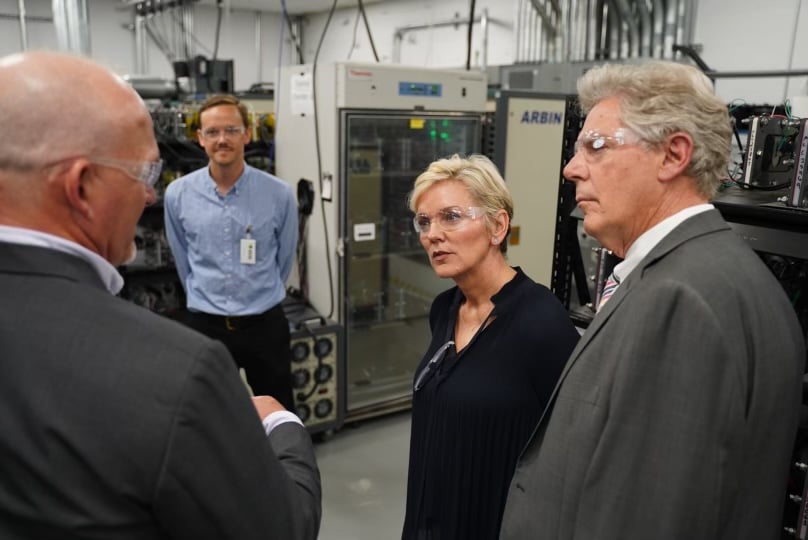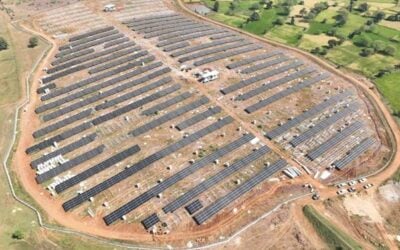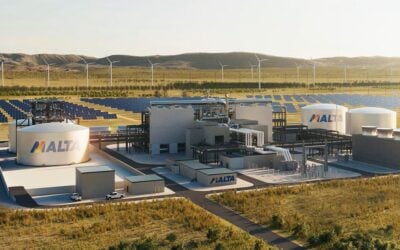
Long-duration energy storage (LDES) projects in the US will be able to compete for a share of “nearly US$350 million” of government funding.
The funding, unlocked by the passing of the Bipartisan Infrastructure Law in late 2021, will be administered by the US$20 billion US Department of Energy (DOE) Office of Clean Energy Demonstrations, which was opened as part of the landmark legislation.
Enjoy 12 months of exclusive analysis
- Regular insight and analysis of the industry’s biggest developments
- In-depth interviews with the industry’s leading figures
- Annual digital subscription to the PV Tech Power journal
- Discounts on Solar Media’s portfolio of events, in-person and virtual
The DOE announced yesterday that energy storage technologies offering between 10 and 24-hours storage duration will be eligible for a slice of the US$349 million total. Up to 11 demonstration projects will be selected that have the potential to move the needle towards the Department’s long-term goal of reducing the cost of LDES by 90%.
Up to 50% of the cost of each project will be paid out, with letters of intent due by 15 December and full applications due in by 3 March 2023.
“Advancing energy storage technologies is key to making energy generated from clean renewable resources—like wind and solar—available for 24/7 use, and is critical to achieving a decarbonised power grid and reaching President Biden’s ambitious climate goals,” US Secretary of Energy Jennifer Granholm said.
“DOE is taking huge steps to lower the cost and increase the duration of energy storage technologies so that clean, reliable, affordable electricity is available whenever and wherever to everyone, especially Americans living in remote and underserved communities.”
More information can be found on the Department of Energy’s funding opportunities portal here.
Long-term goals on long-duration energy storage
As the penetration of renewable energy on the US grid grows, so too does the need for energy storage to balance out peaks and troughs in demand and production. The duration requirement of that storage also grows at higher percentages of renewables.
Lithium-ion batteries commonly used for grid storage are typically considered more cost-effective for durations of up to 4 hours. Although some recent projects announced will see 6- and even 8-hour lithium-ion systems deployed, the energy industry seeks viable alternatives for technologies that can offer scalable long-duration storage for several hours, overnight use, or in some cases even longer.
The state of California recently just paid out US$31 million funding for a hybrid microgrid using vanadium redox flow battery and zinc hybrid cathode battery technology, which is the first project to get funded from a US$380 million pot.
It has been a strategic aim of the US government to reduce the cost of long-duration storage even during the term of Donald Trump as president, with the Energy Storage Grand Challenge competitive funding opportunity launched during his tenure.
However, as with other clean energy efforts, long-duration energy storage market seeding activity has stepped up since Joe Biden took office, with the DOE funding a new US$75 million centre for LDES research at Pacific Northwest National Laboratory (PNNL).
The Bipartisan Infrastructure Law, aka the Infrastructure Investment and Jobs Act, was a sort of companion piece to the more recently passed Inflation Reduction Act (IRA).
Biden described the pair as the greatest steps taken to fight climate change in US history, with the IRA offering incentives for downstream deployment of solar PV, wind and batteries, and the Bipartisan Infrastructure Law offering incentives and stimulus to the upstream, supply side of the clean energy sector.
Other Bipartisan Infrastructure Law initiatives underway include a US$335 million programme to support battery recycling and US$675 million funding for critical minerals R&D. A total of about US$7 billion support for domestic electric vehicle (EV) and stationary energy storage battery value chains will be paid out through the law.
Energy-Storage.news’ publisher Solar Media will host the 5th Energy Storage Summit USA, 28-29 March 2023 in Austin, Texas. Featuring a packed programme of panels, presentations and fireside chats from industry leaders focusing on accelerating the market for energy storage across the country. For more information, go to the website.






